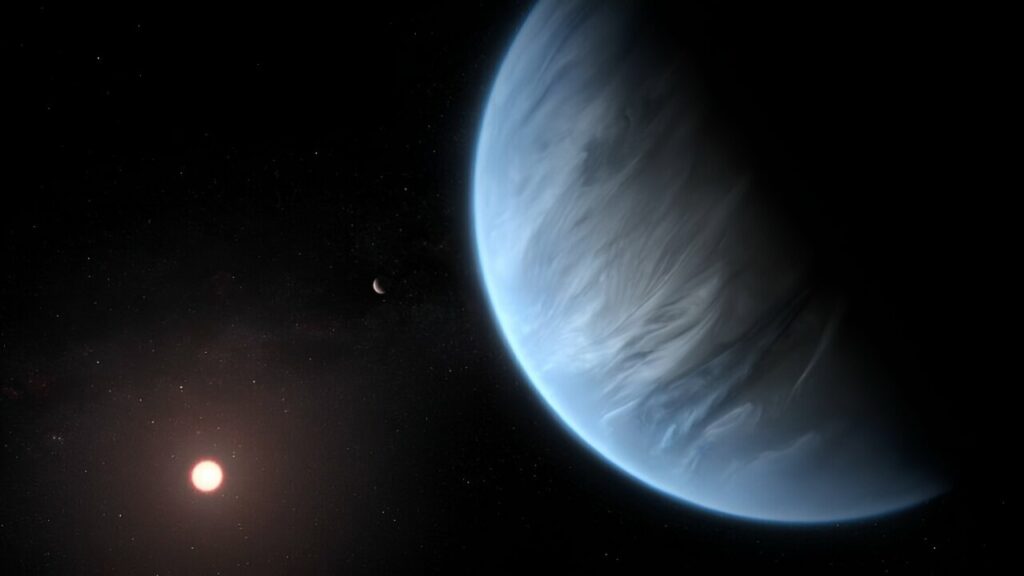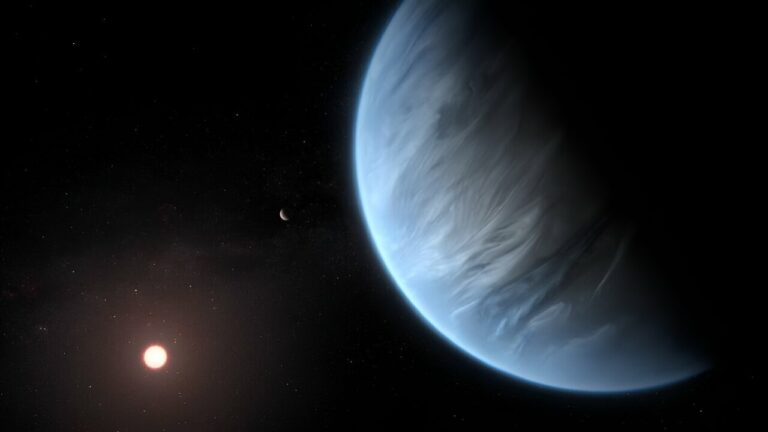Feeling Dehydrated? Water is more abundant than you may realize.
Water is an incredibly abundant substance in the vast expanse of the universe. What makes water so prevalent is the fact that its building blocks, hydrogen and oxygen, are also incredibly common. These two elements have a strong affinity for each other, with oxygen having two available slots in its outermost electron orbital shell, eagerly seeking new connections, and each hydrogen atom carrying an extra electron, making the bonding process effortless.
Hydrogen, the primary component of water, originated from the momentous event known as the Big Bang, making it the most abundant element in terms of both mass and quantity throughout the cosmos. It is truly ubiquitous, constituting approximately 75% of every star, interstellar gas cloud, and even the wandering debris in the vast expanse of intergalactic space that has never experienced the warmth of stellar fusion in the 13.8 billion years of cosmic history. This hydrogen was formed within the first ten minutes of our universe’s existence, and nearly all the hydrogen that has ever existed came into being before our universe reached the age of 20 minutes, excluding only random radioactive decays and fission reactions that occurred later.
A mere twelve minutes, 13.8 billion years ago, marks the beginning of this cosmic era. When you quench your thirst with a refreshing glass of water, you are essentially consuming a substance that has its roots in this ancient epoch.
Thanks to our growing understanding of nuclear reactions over the past century, particularly during the nucleosynthesis era, we have gained remarkable insights into the physical nature of reality. As a species, we have harnessed this knowledge for both peaceful energy generation and the creation of devastating weapons, showcasing our ability to manipulate the fundamental forces of the universe.

Our knowledge of nuclear physics informs us that prior to the ten-minute mark, the conditions in our universe were too extreme for the formation of protons and neutrons. Instead, their constituent particles, known as quarks, existed in a chaotic state, constantly interacting with the strong nuclear force through gluons. This tumultuous environment prevented the stable formation of protons and neutrons.
However, as the universe expanded and cooled down, regions of lower energy emerged, allowing protons and neutrons to condense and form like droplets on a windowpane. These pockets of low energy were able to maintain their integrity despite the prevailing temperatures. Nevertheless, this stability was short-lived. After a mere twelve minutes, when the universe had grown too large and cool, the density was no longer sufficient to bring the quarks close enough together for nuclear binding to occur. Although some protons and neutrons managed to combine during this tumultuous period, resulting in the creation of heavier forms of hydrogen, helium, and a small amount of lithium.
Since then, these hydrogen atoms have traversed the cosmos, with most becoming lost in the vastness of intergalactic space, some contributing to the formation of stars and planets, and a fortunate few engaging in a chemical interaction with oxygen.
Oxygen, on the other hand, has its own fusion story to tell, as it journeys towards becoming water. However, this fusion is not the explosive fusion that occurred in the initial moments of the Big Bang. Instead, it takes place within the cores of stars, where immense pressures and temperatures cause hydrogen atoms to collide and fuse into helium, releasing a minuscule amount of energy in the process. This forced union occurs millions of times every second within the countless trillions of stars scattered throughout the cosmos, collectively illuminating the universe for all conscious observers to marvel at.
At the end of a star’s life, it undergoes a process where the accumulated helium ash in its core fuses together. This fusion results in the creation of carbon and oxygen. However, without a fascinating phenomenon in physics that occurs during the star’s final days, this oxygen would remain forever isolated from the universe, trapped behind an incredibly thick wall of plasma spanning millions of kilometers.
Our own sun will eventually face this destiny, approximately four and a half billion years from now. As it ages and becomes weary, it will expand and turn red, convulsing violently as it takes its final breaths. These immense convulsions will expel material from the star, propelling it into the surrounding system, carried by powerful winds of fundamental particles racing away at nearly the speed of light. Gradually, the sun will shed more than half of its mass, dispersing it into a vast nebula. This nebula will serve as the only evidence visible to distant observers, signifying yet another noble star succumbing to the engulfing darkness of the cosmos.
However, within this gruesome demise lies a miraculous occurrence. A cycle is reborn: the hydrogen and helium, the fundamental elements of the star, now mingled with carbon and oxygen, drift off into the interstellar void. Eventually, they will participate in the creation of a new star, a new solar system, a new world teeming with water, and, if the circumstances align perfectly, the potential for new life to emerge.
This article is republished from PhysORG under a Creative Commons license. Read the original article.
Do not forget to share your opinion with us to provide you with the best posts !





0 Comments